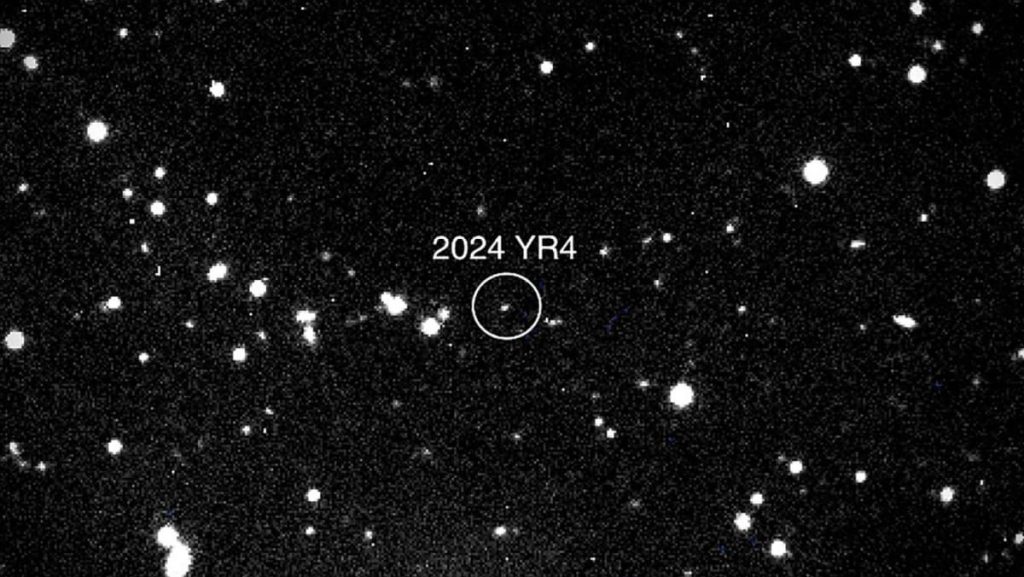Should We Be Worried About 2024 YR4?
The recent discovery of the asteroid 2024 YR4 has raised some concerns, but experts are largely reassuring that there is no immediate threat to Earth. While the asteroid is on a trajectory that could bring it close to our planet in the future, significant time remains for the international community to prepare and implement any necessary measures. Dr. Tom Statler, a planetary scientist at NASA, emphasizes that the asteroid’s current path does not indicate a collision with Earth, and the likelihood of it posing a real danger is still quite low. This buys us valuable time to develop and refine our planetary defense strategies.
The Proven Kinetic Impactor Strategy
One of the most reliable methods for altering an asteroid’s trajectory is the kinetic impactor strategy, which was successfully demonstrated by NASA’s Double Asteroid Redirection Test (DART) mission in 2022. Led by Dr. Andy Rivkin, the DART mission involved a spacecraft deliberately colliding with a small asteroid to nudge it off its course. The target, a non-threatening asteroid named Dimorphos, was part of a binary asteroid system, making it an ideal test subject. The mission was a resounding success, proving that kinetic impactors can be effective in planetary defense. Rivkin, now a leading voice in the field, remains confident in this approach. "I don’t see why it wouldn’t work again," he states, adding that the real challenge lies in securing funding and international cooperation, especially when the threat does not directly impact a particular nation.
Experimental Ideas and Innovations
While the kinetic impactor is a tried-and-true method, scientists are also exploring more experimental approaches to asteroid deflection. One such idea is the use of lasers to vaporize part of the asteroid’s surface, creating a thrust effect that would push the asteroid off course. This method, known as "laser ablation," has the potential to be highly precise and could be particularly useful for smaller asteroids. Another theoretical approach is the "gravity tractor," which involves a large spacecraft slowly tugging the asteroid away using its own gravitational pull. This method is non-invasive and could be effective over longer periods, but it requires significant technological development and resources. Both of these experimental strategies offer promising alternatives and are being studied by various space agencies and research institutions.
China’s Planetary Defense Initiatives
China is also stepping up its efforts in planetary defense. Shortly after the discovery of 2024 YR4, the State Administration of Science, Technology and Industry for National Defence (SASTIND) announced the creation of a special projects centre focused on near-Earth asteroids. A recruitment notice posted on the WeChat account of the journal China Space Science and Technology detailed three available roles for a "planetary defence post," aimed at graduates with expertise in asteroid monitoring and early warning systems. This initiative underscores China’s commitment to developing robust planetary defense capabilities. Additionally, China has unveiled a conceptual plan for a mission to observe and potentially deflect a near-Earth asteroid by 2030. This would be China’s first mission of its kind, adding another layer of global collaboration and expertise to the field.
The Importance of Early Detection and Monitoring
Early detection and monitoring of near-Earth objects (NEOs) are critical for effective planetary defense. The long lead time between the discovery of 2024 YR4 and any potential impact is a significant advantage. It allows scientists and policymakers to carefully assess the asteroid’s trajectory and determine the best course of action. Dr. Michelle Thaller, a scientist at NASA, highlights the importance of continuous monitoring and data collection. "The more we know about these objects, the better we can predict and plan for any potential threats," she explains. NASA’s Near-Earth Object Surveillance Mission (NEOSM) and other global observatories are crucial in this regard, providing the necessary data to make informed decisions.
Preparing for the Unpredictable
While the kinetic impactor and other deflection methods are promising, they are not infallible. If all else fails, the long warning time provides a viable option for evacuation. Authorities could identify and evacuate the potential impact zone, minimizing the risk to human life. Dr. Michael Kelley, a planetary scientist at NASA, emphasizes the need for a multi-faceted approach. "We should not rely on any single method," he notes. "Having a range of tools at our disposal, from kinetic impactors to evacuation plans, ensures we are prepared for any scenario." The key is to remain vigilant, continue research, and foster international cooperation to safeguard our planet from the unpredictable nature of asteroids.












